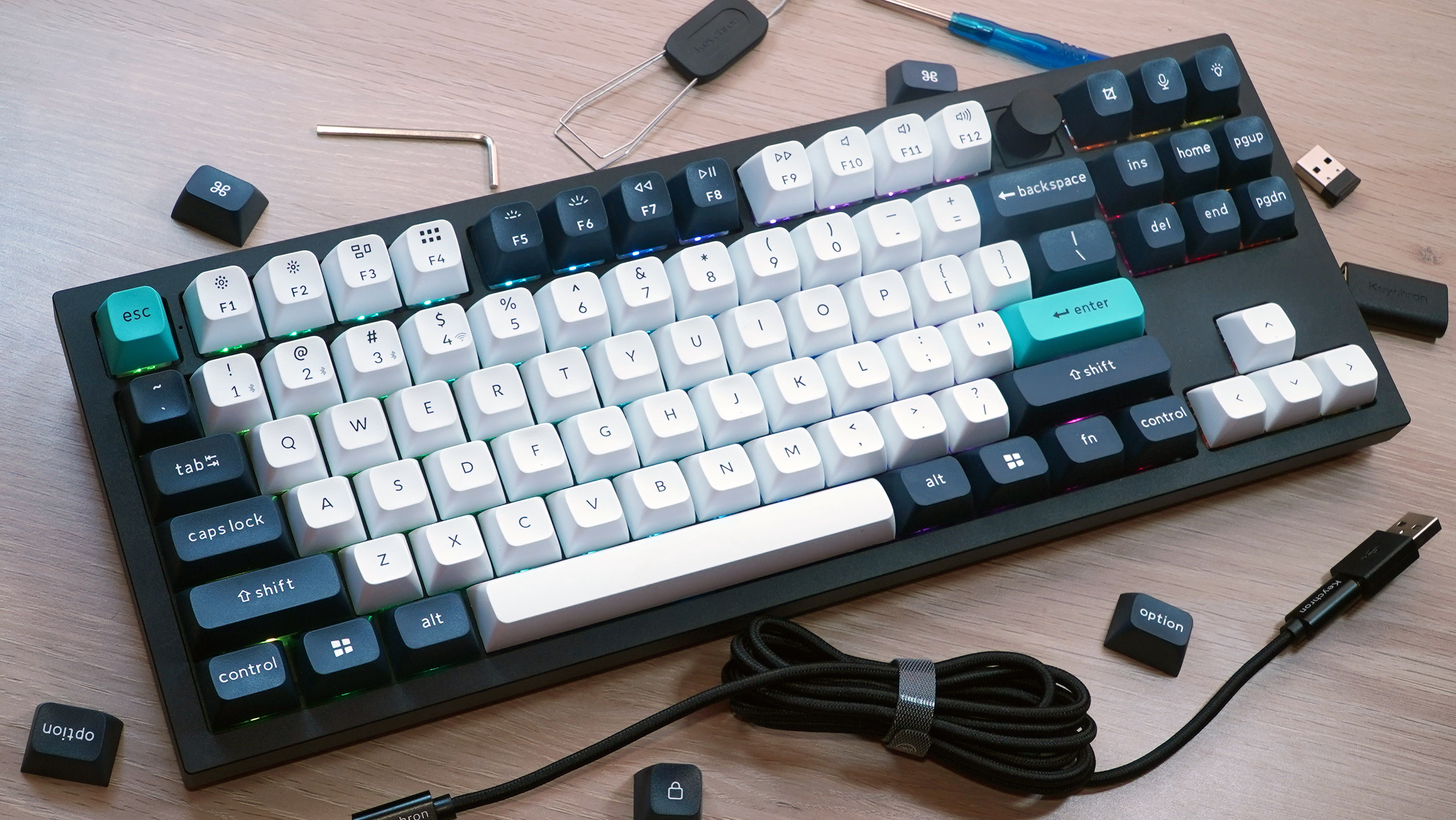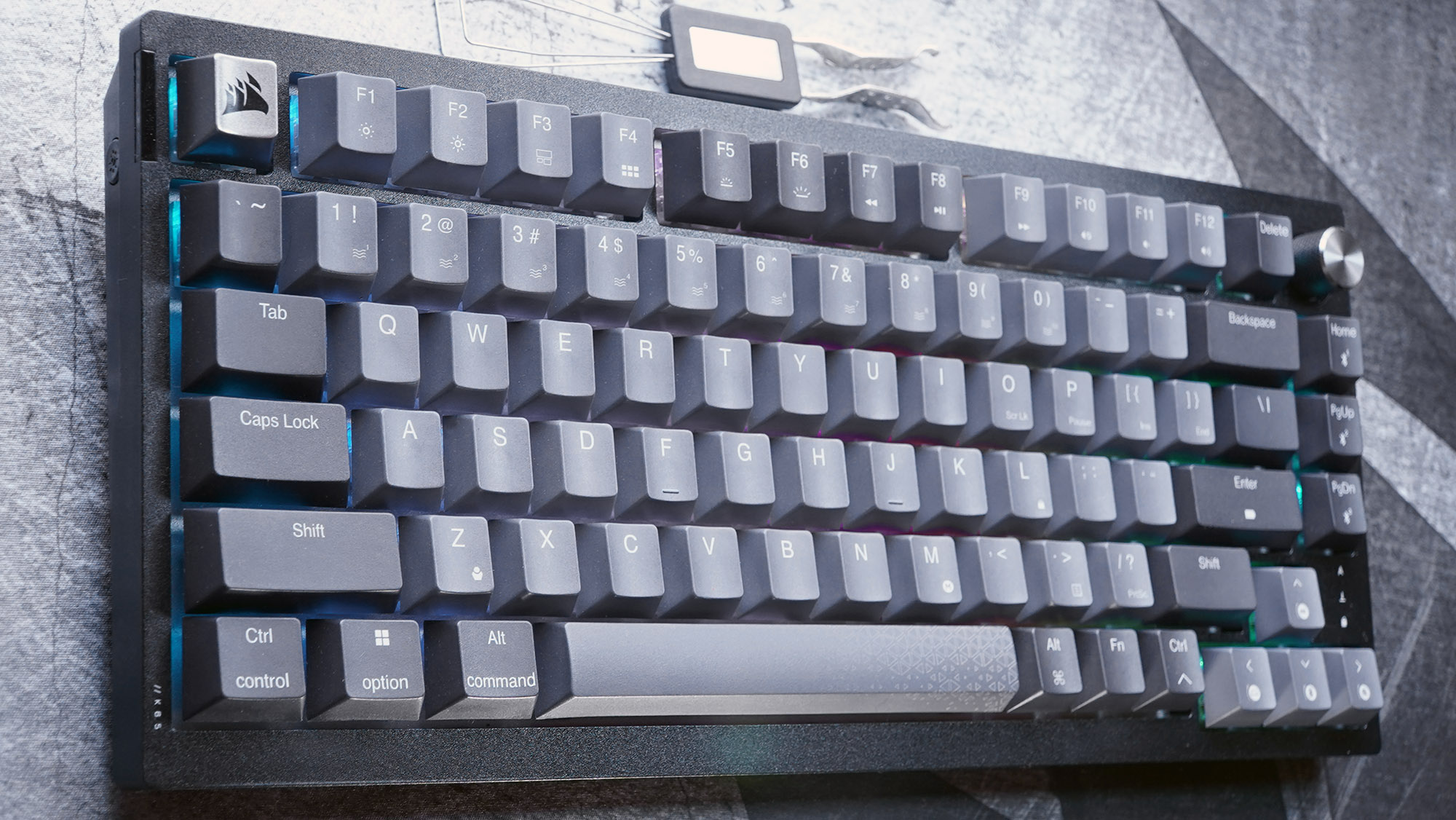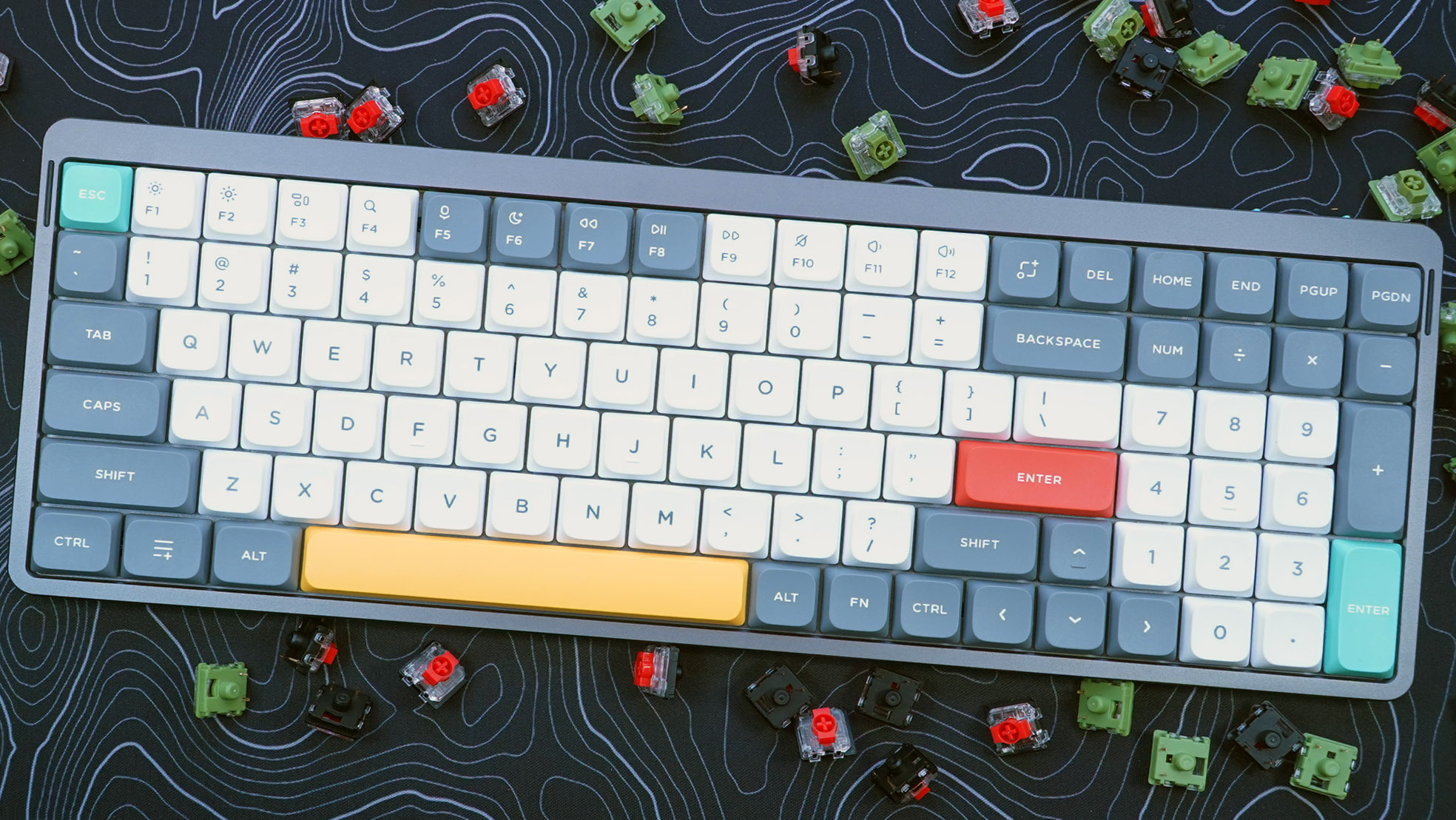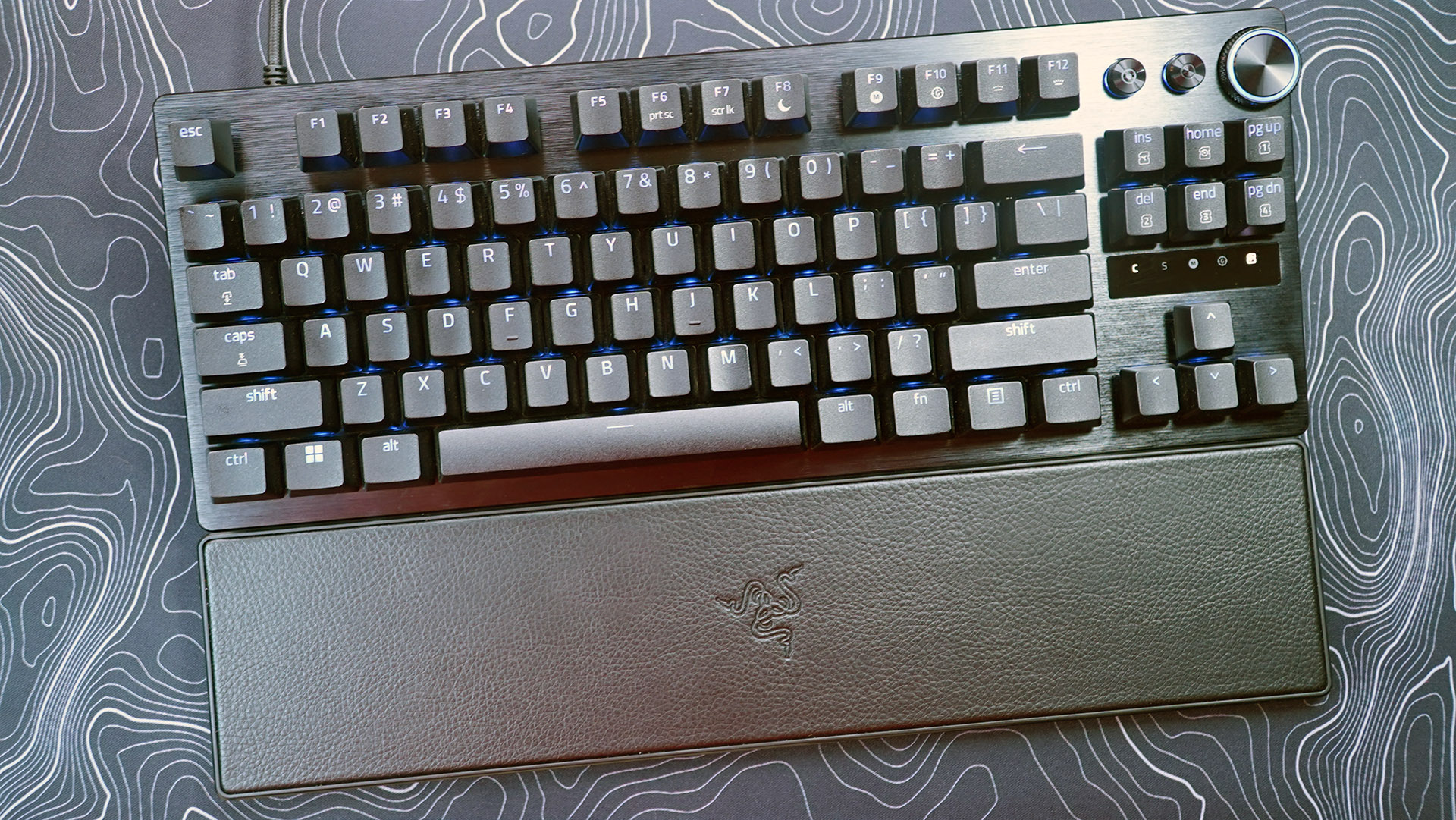Best mechanical keyboards 2024: Top picks for every need
Mechanical keyboards have been around almost as long as personal computers, and the basic switch technology we’re still using first popped up in the 1980s. But it’s not an exaggeration to say that mechanical boards have never been as popular, or as stunningly variable, as they are right now. If you’re just getting into the craze, you might feel paralyzed by the number of options available.
Allow us to remove some of the questioning and doubt. Below are the best mechanical keyboards we’ve reviewed, in a variety of categories—best overall, on a budget, for gaming, wireless, et cetera. Not everything makes the list — for example, though G.Skill’s KM250 is a shockingly good deal, we can’t say the same for the larger and very different KM360 design. Though they excel in different areas, each mechanical keyboard pick is absolutely the best in its class, and well worth both your attention and your hard-earned dough.
Be sure to check out some of our most recent reviews, like the Happy Hacking HHKB Studio and the Razer Huntsman V3.
Why you should trust us: PCWorld has been the go-to name for personal computer news and reviews for over 40 years. And as the writer of this roundup, and the reviewer of most of the keyboards on this list, I can assure you they’ve been thoroughly tested by people who are absolutely obsessed with keyboards.
Every single keyboard on this list has been used by an expert, put through its paces for features and reliability, and carefully considered against the alternatives. We’ve tested every facet of the boards, even programming and complete disassembly for those that support it.
For a more in-depth look at how we test keyboards of every kind, check out our dedicated article covering our keyboard review process.
Update May 10, 2024 to include a new pick for the best low-profile mechanical keyboard: the Nuphy Air V2. Read our summary below to see why we’re so smitten with this compact mechanical keyboard that doesn’t skimp on any of the bells and whistles that a keyboard enthusiast could want, and for less money than you’d think.
Keychron Q Max Series – Best mechanical keyboard overall


Pros
- Tons of features
- Excellent typing
- Improved 2.4GHz wireless
- Endless customization
Cons
- No adjustable feet
- No wrist rest
For the last couple of years Keychron has been absolutely killing it with its high-end Q series. These mechanical boards make features previously available only via building your own or spending a fortune on a boutique design available to everyone, like full aluminum bodies, gasket-mounted PCBs, and easy, open-source programming with VIA. They’re about as good as you can get for a standard design.
The Q Max series takes these designs and shores up their one weakness: reliance on Bluetooth. While Q Max keyboards have multi-device Bluetooth available, they’re also packing standard 2.4GHz wireless with a USB dongle, making them ideal for use with a hefty desktop PC (and they even do alright as gaming boards).
With a wide variety of layouts like the TKL-sized Q3 Max above, there’s a keyboard in this series for just about anyone, including split “ergonomic” designs. They’re fantastic as stand-alone purchases, or bases for your custom dream build with replacement switches and keycaps.
Who should buy the Keychron Q Max SeriesIf you’re ready to step up to a premium mechanical keyboard design, one of these Q Max models should be at the top of your list. At the time of writing they’re available in full-size with number pad, TKL, 75%, 65%, and compact “1800” sizes, plus oddball Alice and left-handed models. There’s even a Happy Hacking Keyboard clone version, all of which come with hot-swap switch sockets and RGB lighting.
They’re great on their own with no extra mods, with the only real downside being so-so stabilizers. But you can swap those out too if you’re okay with opening the case, and the rest of the board is just as customizable. They can be custom-programmed, too, so both newbies and veterans are welcome.
Keychron’s high-end boards are on the pricey side, even if they aren’t as expensive as the boutique builds they’re inspired by, so bargain hunters should hunt somewhere else. And while they offer 2.4GHz wireless and wired options for gamers, the lack of game-specific software features means that there are better choices if you want to slay first and type later.
Read our full Keychron Q3 Max keyboard review Keydous NJ80-AP – Best typing experience


Pros
- Amazing typing experience
- High-quality parts
- Bluetooth and 2.4GHz wireless
- Long battery life
Cons
- Clunky software
- Plastic case
- A bit heavy
Keychron gets the recommendation for an all-around mechanical keyboard. But if what you really want is a fantastic “thocky” typing feel right out of the box, then this unassuming little keyboard is the best I’ve ever tested. It does this with a lot of high-quality components, like PBT keycaps, a brass plate, premium stabilizers, and lots of internal sound dampening. But the big magic is in the switches.
Keydous went with exotic, high-end switches from Kailh to make the NJ80-AP and its stablemates stand out. These “Blueberry Ice Cream” BOX switches have a ridiculous name, but with soft POM plastic housing, reinforced stems, and a factory-lubed sliding mechanism, they feel amazing. They’re the best I’ve ever seen come standard on a keyboard, and that includes boards that cost twice as much as this one.
The NJ80-AP also offers both Bluetooth and dongle-based wireless, RGB lighting, an aluminum volume wheel — all the standards from a high-end mechanical design. Its plastic case and fiddly, proprietary programming software are a disappointment, but for satisfying typing out of the box, it’s simply the best around.
Who should buy the Keydous NJ80-APIf you’re looking for a standard design with absolutely amazing typing, look no further. The NJ80-AP delivers, and if you want something bigger or (slightly) smaller, the same features are available in 65% and compact “1800” layouts (full number pad, slightly squished). Just make sure to order the one with those fancy switches.
But on the other hand, the software leaves a lot to be desired, and you can get keyboards with better all-metal bodies or faster wireless by spending a little more. And if you really want to go all out, you can get most of the way towards the high-quality typing of this board by ordering the same switches online and putting them in another board with hot-swap capability.
It’ll cost a lot — Keydous designs are on the cheap side of the high end — but if you’re dropping more than three digits on a keyboard anyway, it’s a legitimate option.
Read our full Keydous NJ80-AP wireless mechanical keyboard review Corsair K65 Plus Wireless – Best mechanical keyboard for gaming


Pros
- Solid hardware
- Great value for wireless
- Tons of customization options
Cons
- No wrist rest
- slightly awkward default layout
Corsair has been improving its designs for the last couple of years, incorporating more premium features and customization options. And it all comes together in the vastly redesigned K65 Plus, and does so at a shockingly low price.
This keyboard combines the popular 75% form factor, high-speed, multi-device wireless, high-quality switches, and hot-swappable key sockets, with Corsair’s typically good gaming pedigree. The result is a keyboard that does a lot, for a lot of users, for a relatively low price.
While the K65 skips a couple of exotic features like adjustable actuation or an OLED screen, and it doesn’t include a wrist rest in the box, it nails just about every other facet of design. It’s simply the best gaming keyboard you can get at the moment.
Who should buy the K65 Plus WirelessAnyone who wants a high-quality keyboard with tons of options for customization, both hardware and software, will be pleased with this design. It also has some excellent bonuses, like PBT keycaps and a dedicated button for turning RGB on (or off, if you want maximum battery life).
The 75% form factor isn’t for everyone — you’ll have to look elsewhere, or wait for Corsair to offer more models, if you want a different format. It’s also considerably less “flashy” than other gaming keyboards, and doesn’t offer the heft and quality of a metal body.
Read our full Corsair K65 Plus Wireless keyboard review Nuphy Air V2 – Best low-profile mechanical keyboard


Pros
- High-quality switches
- Hot-swap sockets
- Colorful style
- Sound dampening
- VIA programming
Cons
- Cramped number pad layoutThat’s it, it’s a darn good keyboard
Low-profile keyboards are sleek and travel well, but you give up a lot of the powers of a mechanical keyboard by going with a more compact design. Or do you? Nuphy’s Air series wants to cram as many features as possible into the teeny-tiny keyboards, and for the most part, it does just that.
Metal body? Check. RGB lighting? No big deal. PBT keycaps? Yup. There’s even interior dampening for a wonderfully “thocky” feel, and premium switches customized by the manufacturer. And like a lot of the keyboards on this list, you can customize your layout and macros with browser-based VIA software.
But the most impressive inclusion here is that Nuphy made the Air keyboards hot-swappable. There are a lot fewer options with Gateron low-profile switches…but Nuphy sells a handful of customized switches itself, instantly upping your choices when you order. It doesn’t hurt that the keycaps and case colors are poppy and stylish.
Who should buy the Nuphy Air V2 seriesIf you’re looking for a keyboard that travels as well as it looks, the Air V2 series is available in full-sized, 75 percent, and 60 percent form factors. It gets this slot over a limited number of competitors thanks to cramming as many features as possible into a high-quality, super-slim package.
Oh, and it doesn’t hurt that the keyboards are a lot cheaper than you might think based on the features and materials. Depending on the size and switch choices, they range from $100 to $140 at standard prices.
Read our full Nuphy Air96 V2 keyboard review Keychron C3 Pro – Best mechanical keyboard under $50


Pros
- Fantastic price for a mech board
- Decent switches, internal foam, gasket mounting
- VIA and QMK programming
Cons
- Only red lighting
- USB-C cable is a little stiff to plug in
You can spend hundreds of dollars on a mechanical keyboard if you want, but you sure don’t have to. This entry is just $37 in its retail price — often on sale for under $30! — and it has a lot of the features much more expensive boards do. These include gasket mounting and internal foam for better typing, decent if not amazing switches, and programming with open-source VIA software.
You won’t get hot-swap switches or PBT keycaps at this price, and the red backlighting doesn’t offer the dazzling rainbow of RGB. But if you’re looking for a solid keyboard while spending as little as possible, the C3 Pro fits the bill. A few extra touches, like double-stage feet for an adjustable angle and a detachable USB-C cord, really push the value home.
Who should buy the Keychron C3 ProAnyone who wants a full mechanical keyboard experience on a budget will be well-served with this pick, especially if you manage to pick it up on sale. While it lacks some of the more premium touches, it’s punching way above its weight in terms of price — the equivalent keyboard from a vendor like Logitech would cost twice as much, and wouldn’t offer as many options.
The C3 Pro is serviceable, but not great, for gaming. If that’s what you’re after, the G.Skill KM250 — which offers faster switches and the option to swap them out — is a better choice. Both are under $50, with the only real sacrifice being the lack of per-game programming.
Read our full Keychron C3 Pro keyboard review Dygma Raise – Best ergonomic mechanical keyboard


Pros
- Sturdy build
- Hot-swappable switches
- Easy keyboard programming in VIA
- Priced very competitively
Cons
- Slightly awkward keyboard layout
- No tenting kit available (not even as an optional accessory)
Gamers who need a split ergonomic layout don’t have a lot of choices available to them. The Dygma Raise is the best of this very limited selection, offering a mix of customization and ergonomic options that will delight those who can afford it.
With fully split halves and a tenting kit that can give you extreme angles no standard keyboard can reach, the Raise (get it?) appeals to gamers and mech fans who need extremely specific angles for comfort or health reasons. And its custom software is no slouch, either.
Who should buy the Dygma RaiseIf you demand the absolute best in both gaming performance and ergonomic flexibility, there’s no substitute for the Raise. Adding on extras when ordering ups the price, and the capability.
But unless you absolutely need the latter, there are far cheaper options in the gaming category. Keychron offers a split mechanical keyboard with fewer options for quite a bit less.
Read our full Dygma Raise review Model F Ultra Compact – Best old-school mechanical keyboard


Pros
- Excellent typing feel
- Classic layout is instantly familiar
- Durable die-cast metal chassis
- Easy to repair and customize
Cons
- Heavy key feel isn’t great for fast-paced games
- Lacks modern hardware and software features
- Expensive
Arguably the most famous keyboard among mechanical enthusiasts is the IBM Model M, thanks to its unique and incredibly tactile (and noisy!) buckling spring switch mechanism. Some of these keyboards have been in continual use for more than 40 years, but if you’re looking for something a little more accessible, Model F Labs is making reproductions with exactly the same tank-like build and modern USB connections.
The typing experience on this keyboard is like nothing else on the market, harkening back to a time before cheaper rubber dome manufacturing in the ’90s transitioned to smaller and less noisy designs. Just don’t be surprised if it’s a little harder than you’re used to — on both your fingers and your wallet.
Who should buy a Model F Ultra CompactThose who want a keyboard that they can pass on to their descendants (or that can be used as a door stop or a melee weapon) might be very interested in the Model F. For actual typing, you’ll love it if you’re the kind of person who slams down on the keys like you’ve got a grudge against them. Be aware that it’s also extremely loud, even by mechanical keyboard standards…which might be a good or a bad thing depending on whether you work from home.
The downside is the cost, with prices starting at around $300 and going up. For that much dough you might consider rescuing an actual Model M from the dustbin of history — there are still plenty available on eBay — and using an adapter instead. The long travel and heavy click also make these keyboards poorly suited to modern gaming.
Read our full Model F Ultra Compact review Razer Huntsman V3 Pro – Best analog mechanical keyboard


Pros
- Excellent software customization
- Great controls for analog input
- Easy layout swapping
Cons
- Expensive
- Typing is loud and wobbly
- Hard wrist rest
“Analog” keyboards, those which can adjust the actuation point of their keys by software, are a rare and expensive breed. Razer has the best of the lot by a whisker, thanks to its excellent software and some thoughtful design. Pro gamers — or gamers with “pro” esports aspirations — need look no further than the Huntsman series.
This flagship of Razer’s keyboard stable stands a bit above the rest thanks to its complex Gen 2 optically triggered switches and the Synapse software package. But even without software, the onboard LED indicators can let you quickly switch between light and heavy actuation, or program a quick macro.
With otherwise excellent design, not to mention an included wrist rest, the Hunstman V3 Pro is the best in a small field of competition. It’s available in full-size, TKL, and “mini” 60% variants.
Who should buy the Huntsman V3 ProThe Huntsman V3 Pro is for those who want the ultimate in gaming keyboard capability. With extra functions like Rapid Trigger and analog-style movements, the Huntsman can do tricks that lesser designs simply can’t manage. And it has the price tag to prove it.
Those who don’t need these very niche capabilities, who prefer hardware customization over software with hot-swap switch sockets, or who simply want to make do with a more sober budget should look elsewhere.
Read our full Razer Huntsman V3 Pro TKL keyboard review FAQ 1. What’s a mechanical keyboard?A mechanical keyboard uses a more elaborate construction than a standard keyboard. Instead of a wide membrane covering the entire board and activating an electronic sensor to detect keypresses, each individual key has a dedicated switch mechanism with an internal spring. When you press down on the key, the stem depresses the spring and closes an electrical circuit, registering your key press. This makes for a longer, more satisfying typing experience, more like an old-fashioned typewriter than a laptop.
2. What should I consider when shopping for a mechanical keyboard?If you’re just getting into mechanical keyboards, then you’re probably most interested in how it “feels” to use one. In short, mechanical switches offer a deeper and more satisfying press on each key, which is preferred over standard inexpensive keyboards by heavy-duty typists and gamers. (Not all of them, of course, but most people seem to favor at least a certain level of clickiness.) But there are a lot of different variables that can affect how those keys feel, and other options like wireless or customization.
3. What kind of key switches should I choose for a keyboard?Modern mechanical keyboards come in a staggering array of switch varieties, from smooth and linear to loud and clicky, with tons of options for mechanisms and spring strength. Many keyboard makers buy switches from other companies, and some (especially gaming brands) build their own custom designs. The only real way to know which one you prefer is to try ’em out (retail store displays are great for this). That being said, more expensive keyboards tend to come with nicer, high-quality switches from name brands like Cherry and Gateron. For the ultimate in customization, track down a keyboard with hot-swap switch sockets, which let you swap out the switches for new and different ones whenever you want.
4. What are keycaps?Keycaps are the little pieces of plastic that sit on top of the switches — what your fingers press down on. Switching out the keycaps for a set of nicer ones, maybe made of better PBT plastic or themed after your favorite TV show, is a popular and easy keyboard mod. Some keyboard makers even sell their own upgrade sets. Keycaps with a Cherry MX-compatible stem will work with almost all modern mechanical switches, just make sure you find a set that matches the layout of your keyboard.
5. What keyboard layout should I choose?The layout of the keys on your keyboard varies more than you might think. Full-sized (100%) keyboards include a 10-key number area to the right of the arrow cluster, but gaming models often omit this in order to make more room for mouse movements, calling this the “10-key-less” or “TKL” layout. Some keyboards go even smaller, with 60% being the smallest that mainstream brands use, chopping off the Function row, 10-key area, and even the arrow keys (which have to be accessed via a Fn button). A few designs go even larger than the full layout, with an extra column or two of programmable keys for custom bindings or macros.
But there are a wide range of layout choices between these broad categories. Popular 65% and 75% keyboards are quite small, but still keep the arrow keys for ease of use, while smooshing down some others to make room. Ergonomic layouts on split keyboards try to emulate the curvy designs of some elaborate conventional keyboards. Which one you want comes down to use-case, available space, and perhaps more pertinently, taste.
These general layouts shouldn’t be confused with country- and region-specific key layouts for letters and numbers, like ANSI and ISO. Most popular designs are available in at least those two variants.
6. Should I buy a wireless mechanical keyboard?Mechanical keyboards start with a standard wired USB connection, which may or may not be detachable from the keyboard itself for easier cable routing. Wireless is usually a premium upgrade, though some budget models are available too. Wireless boards tend to default to Bluetooth these days, since pretty much all PCs and mobile devices can use it. More premium models offer both Bluetooth and the faster, more reliable USB wireless dongle, typically on a 2.4GHz connection. Gamers definitely want to stick to wired or dongle options as Bluetooth’s susceptibility to input lag and interference can hinder gaming.
7. Do I need LED lighting on a mechanical keyboard?Even budget gaming keyboards come with LED backlights these days, giving you a little extra help when hunting for keys in the dark. More elaborate models — especially from gaming brands like Razer and Corsair — offer fully synchronized RGB light shows with elaborate animations. But unless you’re constantly playing in the dark and you can’t touch-type, it’s entirely cosmetic. It’s fun, that’s about it. You don’t need lights on a keyboard, it’s just a fun extra.
8. What extras should I look for in a mechanical keyboard?Keyboard makers are forever trying to one-up each other with extra features. For a mechanical board you can generally expect a removable USB cable (maybe a braided one for nicer boards), and possibly an included keycap puller and wrist rest. Larger boards usually include dedicated media controls, and the nicer ones get a fully programmable wheel or knob, as well as hot-swap switch sockets that let you experiment with different types of key switches. An especially nice option is on-device memory, allowing you to keep key layout programs without running a driver program on each new computer. The most expensive boards have premium metal bodies, internal foam for sound reduction, and sometimes even gasket mounting, which gives the keys an extra bit of bounce by suspending them between two layers of foam or silicone.
None of these are really necessary, but they’re all nice and enhance the experience. Depending on your taste and budget, you can look for a board with a few extra features, or hunt down a super-premium “endgame” design with all of them.
Keyboards